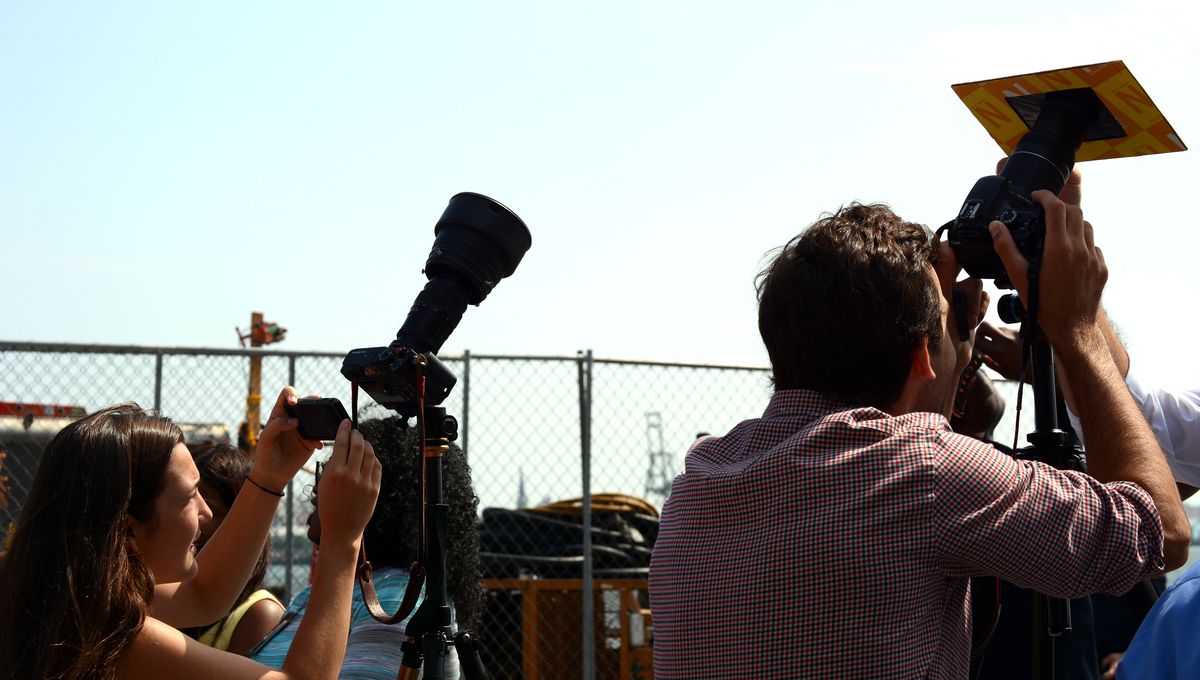
For many people, total solar eclipses are a once-in-a-lifetime opportunity. So if you are, or you are going to be, on the path of totality on April 8, you might want to consider not just safely watching it but snapping photos of the incredible event. You will have several minutes of totality, so you have time to both gaze at the spectacle and create a lasting image of what is going on in the sky.
The first thing is please do not look at the Sun without proper glasses. The Sun is very bright and the Moon shields most of its brightness as totality is approached… but that doesn’t make the portion of the Sun you can see any less damaging. Only when the Moon completely covers the Sun it is safe to remove glasses.
This is even more important when you consider lenses. If you are using cameras, binoculars, or telescopes, use them only with the appropriate filters in the lead-up to totality. Seeing the sun with the naked eye is very risky; putting your camera equipment or eyeball in the way of a magnified and collimated sunlight is destructive. If a lens can use sunlight to start fires, you do not want to put something you care about behind it.
How to best photograph the eclipsed sun
Now that the warnings are out of the way – seriously, protect your eyes – this is how you should approach photography of the Sun during an eclipse. Make sure you have a filter if you are planning to take shots before or after totality. At totality you don’t need filters and glasses – but only at totality. Trust us, you will know totality when you see it.
You do not need fancy equipment to photograph totality. Make sure you are in the right position and maybe consider if you want to include the panorama as well! The sky gets weirdly low on the horizon during an eclipse, like a sunset in all directions. The celestial spectacle can also be enhanced by the terrestrial spectacle of the people watching the eclipse!
If you are using a DSLR or another camera, consider a good zoom lens to get a nice close-up shot of the Sun. For DSLR cameras, the best way to determine the correct exposure is to test settings on the uneclipsed Sun beforehand. Using a fixed aperture of f/8 to f/16, try shutter speeds between 1/1,000 to 1/4 second to find the optimal setting, which you can then use to take images during the partial stages of the eclipse.
During totality, the corona has a wide range of brightness, so it’s best to use a fixed aperture and a range of exposures from approximately 1/1,000 to 1 second; but, you could try to do something more complex. Renowned astrophotographer Andrew McCarthy took a beautiful shot of the eclipse in 2017 just using automatic settings on a DSLR and a good zoom lens. This time around he plans to do something even more spectacular.
“That photo was captured using automatic settings and a 300mm telephoto lens on an extremely old DSLR. This year I will be capturing a much more technically complex shot, which will be a high dynamic range photo using several telescopes and cameras all working simultaneously for the four minutes of the eclipse. The resulting image will have much more detail and dynamic range if I succeed,” McCarthy told IFLScience.
You can find more details about the shot and general eclipse photography in his guide. And we completely agree with his parting advice: do not fidget with the camera for the whole totality. You have just a few minutes of the Sun being covered by the Moon; do not waste them looking at a screen.
And please stay safe before, during, and after!
Source Link: How To Best Photograph The Upcoming Solar Eclipse